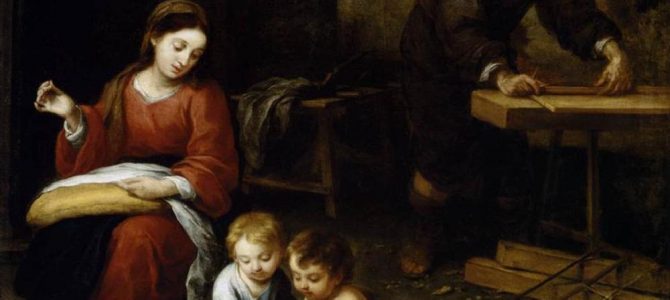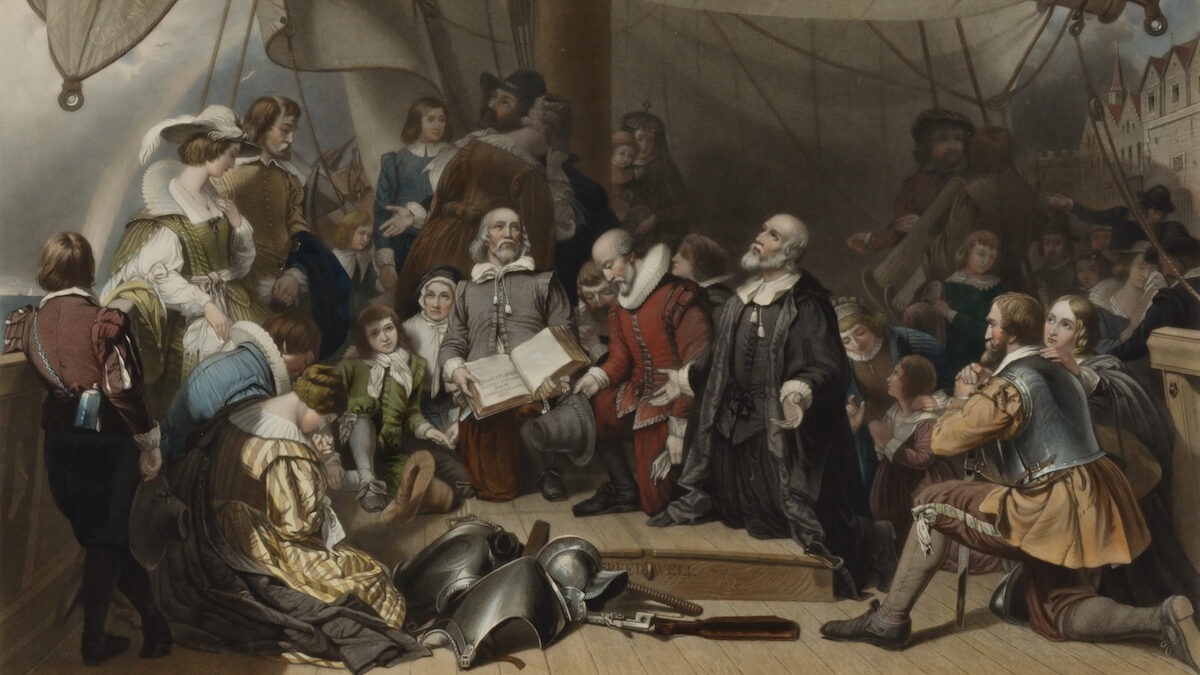
Christmas lasts more than a day. The liturgical season begins on Christmas Eve and lasts, on Catholic calendars, past the Epiphany and forward to Jesus’ baptism by John in the Jordan. This year, that takes us to January 9. Christians are still in Christmastide; the Christmas story remains timely for a few more days.
Jesus of Nazareth, Word made flesh—Jewish flesh—is veiled by time, by the screen of translations, redactions, and literary devices or by theological concerns. Little can be said with certainty about the birth and infancy of Jesus. Scholars approach the fragmentary infancy narratives warily; we view them unreservedly through the lens of tradition. We are content to overlook tradition’s large carrying capacity, its latitude for poetic expression knitted together with historical detail.
Nevertheless, to take the Incarnation seriously is to take history seriously. Jesus’ birth was a corporeal event at a certain moment in a specific social milieu. Downplay the materiality of it, disguise its time-bound concreteness, and we are left with a disembodied, de-Judaized Jesus, and an equally disincarnate Mary.
Eviscerate Theology, Insert Politics
The infancy narratives attest to realities best affirmed by faith in the sovereign action of God. If the search for the historical Jesus—the “real” Jesus, as some put it—takes on urgency this time of year, it is because the Christmas story is so frequently taken hostage by politics. The social and economic environment in which Jesus was born becomes a mirror in which we see our own times, our own dilemmas.
‘Tis the season for homilists to twist the infancy narratives into a vehicle for modern social and political agendas, usually leftist. In politicized interpretations, Mary and Joseph are the wretched of the earth, a poster pair for the unhoused and displaced. Cries of “No room at the inn” become a shaming device to intimidate current unease with mass immigration. The phrase distorts the biblical injunction to offer shelter to strangers by ignoring biblical distinctions between foreigner and stranger.
So, was there an inn? The means available to historians suggest something different. Imagination leaps at the data.
Writing in Greek for his intended audience, Luke uses the word kataluma, which tradition translates as inn, but is used elsewhere to describe a private dwelling or a guest chamber, the kind of “upper room” in which Jesus and his disciples shared a last Passover meal. Kataluma can also refer to a rooftop where families slept, some under a canopy, in warm weather. If a homeowner had means, the word could apply to a solid second story accessible from stairs outside. Either way, centuries before Motel 6 and Airbnb, it was a space commonly rented to other Jews passing through.
Driving through Sicily some years back, I passed towns dotted with houses topped by blue tarps in lieu of a roof. A guide explained that when a homeowner added a story, taxes were raised once a roof was built. But the Mediterranean climate let cost-conscious Sicilians forego a proper roof and make do with a tarp. It was a near-biblical sight.
Living Quarters Were Near Animal Quarters
Caesar Augustus’ census created demand for spare rooms. None was available when Joseph and Mary arrived. So they were put up in the animal quarters, that enclosed portion of a house where a family’s ox and ass, maybe a goat or sheep, were sheltered overnight before being let out in the morning.
Average homes had floors of pounded earth; people unrolled a mat and slept covered by their own cloaks. In this ancient agricultural milieu, people were accustomed to animal quarters attached to their own. That manger filled with fresh hay was not the humiliation it would be to shoppers at Baby Gap.
There is a passage on the history of the Israelites in 2 Samuel 12:3 that I love. It evokes the intimacy between an agricultural people and their domestic animals: “But the poor man had nothing except one little ewe lamb he had bought. He raised it, and it grew up with him and his children. It shared his food, drank from his cup and even slept in his arms. It was like a daughter to him.”
Why Joseph and Mary Traveled
It is hard to elbow our way past cultural assumptions about that crucial birth in Bethlehem, but we can try. So stay awhile with Luke’s familiar words: And it came to pass in those days that a decree went out from of Caesar Augustus that all the world should be registered.
Calls for a government census occurred at different times and places in the Roman Empire. Scholars ask: Did Luke have his dates right? His gospel tells us that “all went to be registered, everyone to his own city.” Historians skeptical of Luke’s accuracy wonder: Why did Joseph not simply register on the spot where he made his living, in Nazareth? Since women were not required to register, why would Mary travel with him?
Joseph and his pregnant wife had set out on the road from the Galilean town of Nazareth up to Bethlehem, David’s address in Judea. But the why-and-when of it, considered in terms of what is known of first-century realities, casts light on the human dimensions of an event enveloped by theological treatment.
If Roman protocols exempted Mary from registering, she could have stayed behind in Nazareth. But would a protective man leave his pregnant wife at home? And would a woman in the late stage of pregnancy hazard a 75-mile trip, probably on foot as was customary? (Luke mentions no donkey.) In a tiny, sparsely populated town at the time, what was the likelihood of an inn?
The Lucan narrative says nothing at all about Mary being in her ninth month on arrival in Bethlehem. Filling in the blanks, might the couple have left Galilee earlier when it would have been easier for Mary to travel? If Joseph’s Davidic descent was, indeed, biological rather than symbolic, could he have had living relatives in Bethlehem? Given his skills and possible family contacts, might he even have found interim work there? And might it have been some family friend who took him in?
The Holy Family: Peasants or Craftsmen?
Sketchy and piecemeal, the infancy narratives invite conjecture. Howard W. Hoehner, New Testament scholar at Dallas Theological Seminary, proposed this: Roman law linked inheritance to the male line. It was to Rome’s advantage, then, to align taxation to a man’s claim to what Hoehner called “the family estate.”
Intriguing phrase: family estate. Doubtless, any such entity is worlds away from modern associations with the term. Nonetheless, it opens a door onto speculation about the precise nature of the material situation of Joseph—a free craftsman—vis-a-vis the society of indentured laborers in which he lived and raised his son.
It is customary to depict the Holy Family as peasants, living as they did in an insignificant Galilean hilltown. But biblical scholarship warns against a reductive view. Joseph and his son were autonomous artisans. The Greek word tekton applies; it is a term that covers carpenters and builders alike.
As was customary among skilled artisans—stonecutters, masons, weavers, dyers, other specialized craftsmen—they worked for hire. In a time and place where the labor of ordinary Jews was bound or forced, theirs was contractual. Jesus, like his father, was a free commoner, along with traders, merchants, scribes, teachers, and those others of the social class that comprised the Pharisees.
There is risk of anachronism here, but insofar as a modern term can illumine first-century Palestine, it is fair to say that Jesus was raised by a blue-collar Jew. As befit a son, he became one himself.
It is an image of Jesus that appeals to me. It keeps Jesus of Nazareth—Yeshua—grounded, his feet on the earth like yours and mine.









